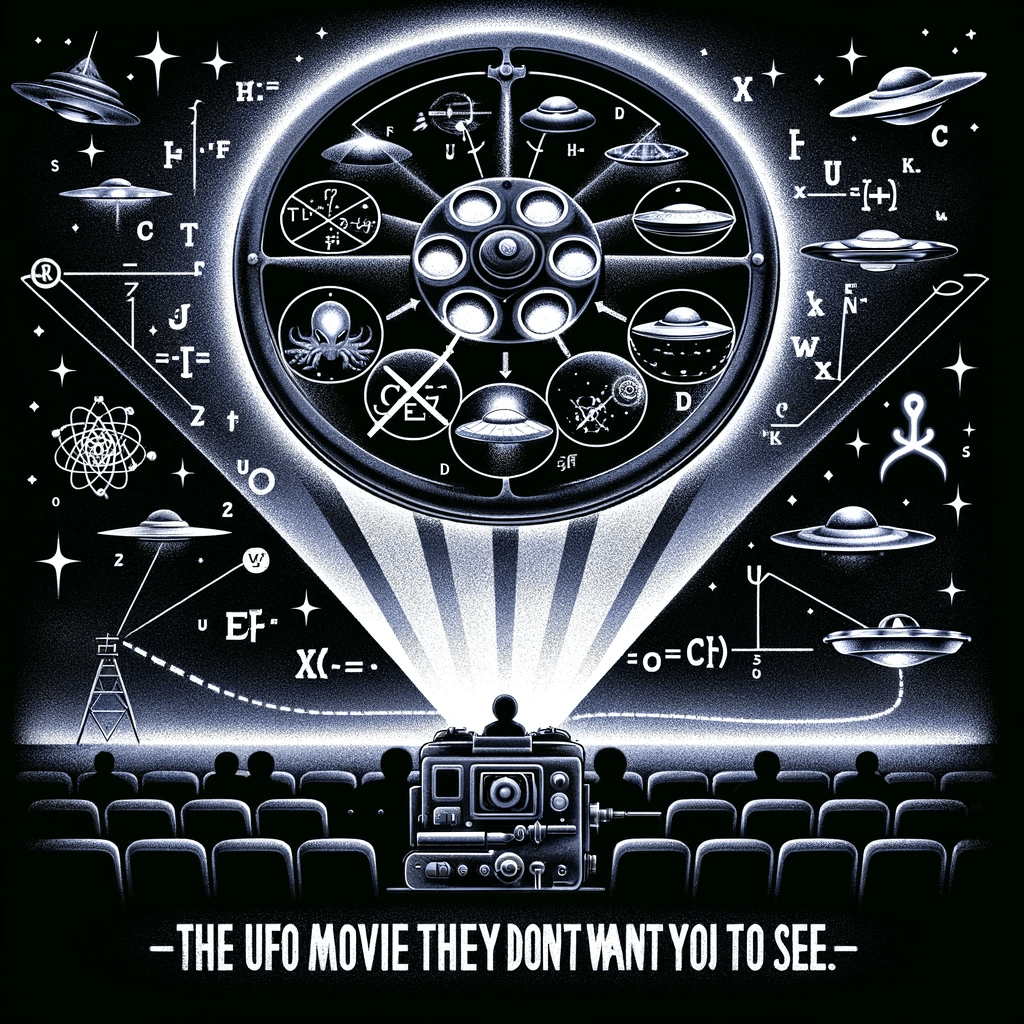The UFO Movie THEY Don’t Want You to See (2023)

The “UFO Movie THEY Don’t Want You to See” stands out as a notable debunking effort, critiquing UFOs with logic and skepticism. Despite its compelling arguments, my personal certainty in the reality of crash retrievals, recovered bodies, and reverse engineering leads me to view it through a lens of amusement, transforming the documentary into entertainment rather than disillusionment. Many people will find accepting the reality of these phenomena challenging. Attempting to convince a mind not ready to understand is not only cruel but likely futile.
“The UFO Movie THEY Don’t Want You to See” is a compelling documentary that looks deep into the realm of UFOs and alien life. Directed and produced by Brian Dunning, a well-known skeptic and host of the Skeptoid podcast, the film is recognized as a masterclass in critical thinking, exploring and debunking myths surrounding UFO sightings. It critically examines various famous UFO incidents, debunking them with logical explanations and urging the audience to consider the vastness of the universe and the improbability of alien visitation.
The documentary critiques the government’s Unidentified Aerial Phenomena Task Force, suggesting it lacks the necessary expertise to debunk the common, non-extraordinary explanations of UFO sightings. The film has garnered acclaim, winning Best Documentary at the Brooklyn SciFi Film Festival and Best Director at the L.A. Sci-Fi & Horror Festival in 2023.
The documentary explores the possibility of alien life and civilizations, highlighting the vastness of the universe as a factor that makes alien life likely, yet physical visitation improbable due to the insurmountable distances and limitations of faster-than-light travel. It suggests that while life is likely abundant in the universe, the sheer scale and physical laws governing space make direct contact or visitation highly unlikely, steering the conversation towards other methods of potential interaction or detection, such as signals or unmanned probes.
In the documentary, the “Christmas tree problem” refers to the challenge of synchronicity in the universe, where the brief existence of civilizations might not overlap for communication or visitation. It discusses the impossibility of aliens skirting the laws of physics, emphasizing that even advanced civilizations are bound by these universal laws. The film advocates for a high bar for evidence in UFO sightings, stressing the importance of critical thinking and scientific validation over anecdotal or low-quality evidence, ultimately urging viewers to maintain a rigorous standard when considering claims of extraterrestrial encounters.
The documentary looks into the history of solved UFO cases, revealing that most are attributable to misidentified aerial phenomena, like celestial objects or man-made artifacts. It emphasizes the importance of rigorously examining evidence, using scientific methods and critical thinking to debunk or explain UFO sightings. The detailed examination of evidence underscores the necessity of skepticism and methodical analysis in the face of extraordinary claims, advocating for a discerning approach to UFO sightings and purported evidence of extraterrestrial encounters.
Rendlesham Forest: The documentary revisits the Rendlesham Forest incident, often described as Britain’s Roswell, where U.S. Air Force personnel reported encountering an unidentified flying object in 1980. Upon reevaluation, the incident is attributed to a misinterpretation of the Orfordness Lighthouse, with subsequent embellishments over time distorting the original accounts.
The Ariel School: The film addresses the 1994 Ariel School sighting in Zimbabwe, where students reported seeing a landed craft and beings. The documentary suggests the children’s accounts were influenced by a recent meteor event and mass hysteria, discrediting the notion of an extraterrestrial visit.
1967 Malmstrom AFB: The documentary discusses an incident at Malmstrom Air Force Base in 1967, where a UFO was claimed to have disabled nuclear missiles. However, upon investigation, it was found that a power failure led to the missile shutdown, debunking the connection to extraterrestrial interference.
The Jimmy Carter UFO: The documentary explores former U.S. President Jimmy Carter’s UFO sighting before his presidency. Initially an unexplained phenomenon, further investigation reveals it was likely a misinterpreted sighting of a natural celestial event, possibly a meteorological or astronomical occurrence, rather than an alien spacecraft.
The documentary scrutinizes videos released by the US Navy, famously known as Gimbal, Go Fast, and Tic Tac. Through expert analysis, it suggests these videos likely depict misinterpretations of mundane objects or optical illusions rather than evidence of advanced extraterrestrial technology.
The documentary discusses the “Wow!” signal, an intriguing radio transmission detected in 1977, considered a potential alien message. It was received at a frequency known as the “waterhole,” a quiet band ideal for interstellar communication due to its low background noise and association with hydrogen and hydroxyl molecules—basic components of water. This frequency is considered a universal gathering point in the electromagnetic spectrum, potentially used by extraterrestrial civilizations attempting to make contact.
The documentary’s logical dissection of UFO phenomena, while commendable, contrasts with personal experiences and certainties about extraterrestrial encounters. Acknowledging its well-deserved acclaim, I appreciate the film’s role in the broader discourse, treating it as an engaging narrative in the vast universe of UFO dialogue.


